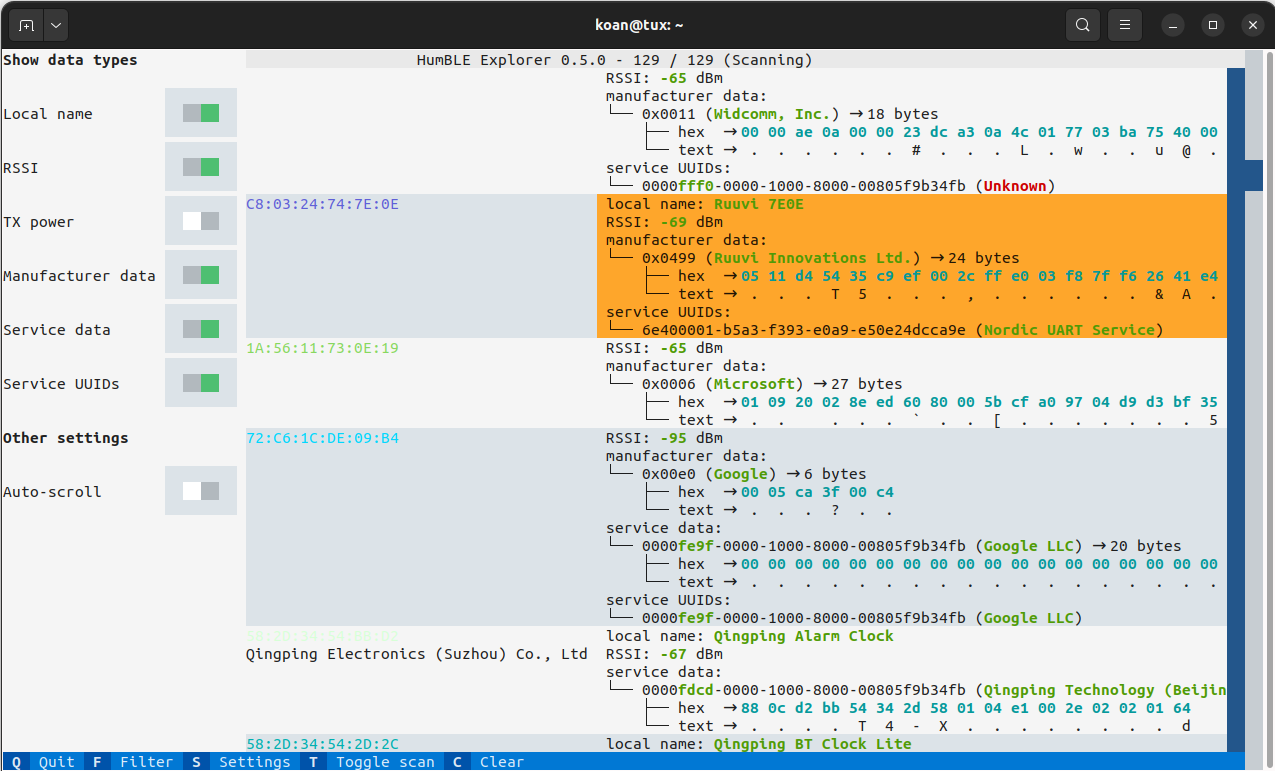Creating terminal user interfaces in Python with Textual
Last year, I began using Textual to develop HumBLE Explorer, a cross-platform, command-line and human-friendly Bluetooth Low Energy scanner. Textual caught my attention because it promised to be a rapid application development framework for Python terminal user interface (TUI) applications. Thanks to Textual, I was able to create an application like this, including scroll bars, switches and tables:

One of Textual's key features is that it's inspired by web development practices. This allows for a clear separation of design and code using CSS files (in the Textual CSS dialect), making the framework both developer-friendly and highly customizable. It also has reactive attributes, as well as a growing library of widgets. Additionally, the framework provides useful tools for debugging and live editing of CSS files during development.
If you want to have an idea about Textual's capabilities, install it from PyPI and run the demo:
In addition, one of Textual's developers maintains a list of Textual-based applications.
As a relatively new project (started in 2021), Textual still experiences occasional breaking changes in new releases. However, the developers are easily accessible for support on their Discord server and provide regular blog updates. Moreover, Textual has excellent documentation. I plan to use Textual again for new terminal user interfaces in Python.
For some more background, read my article Textual: a framework for terminal user interfaces on LWN.